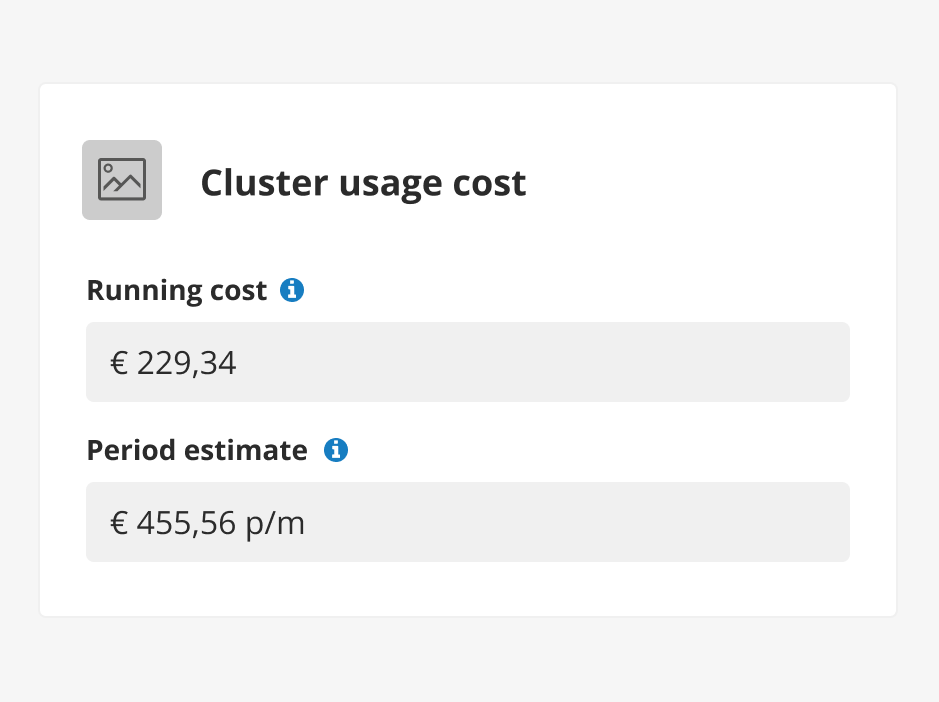When you're using a Kubernetes cluster at TransIP, you will see an overview of the 'Running costs' and 'Period estimate' of your cluster in the new control panel.

In summary, both are calculated based on the usage of your cluster per hour. The hourly rate is based on a month with 28 days and 24 hours per day. In this article, we will explain this calculation in more detail.
- Invoices are sent on the 1st and 15th of the month, depending on the order date of your cluster. For example, if you ordered your cluster on the 5th, the cluster will be billed on the 15th of the month. It will be billed for the period of the 5th of the current month until the 5th of the next month.
- Block storages and load balancers are invoiced on the same date as the cluster itself, regardless of when they were taken in the month. However, the costs are calculated based on the duration of usage in that period.
- We invoice one month in advance. Therefore, the first invoice includes the calculation for both the month in which the cluster was taken and the following month.
Running costs
The running costs are based on the resource usage costs of your cluster (nodes, block storages, and load balancers) between the start of the billing period and the 'now'. You can find an overview of the rates on this page.
- The start of the billing period is the day of the month on which you took your cluster, for example, August 6th.
- The 'now' is the moment when you check the running costs in the control panel.
- We assume months of 28 days because of February, but you will never pay more than the monthly price, regardless of whether the month has 28, 30, or 31 days.
The running costs are calculated as follows:
The monthly price of the resource per minute / 28 days * the number of minutes the resource is used * the number of resources (e.g., the number of nodes). The amount is then rounded to the nearest hour. Let's look at this calculation using an example with a single K4 node:
The price of a K4 node is €20, excluding VAT, per month. Suppose you took it on the 5th of the month and check the control panel on the 12th, exactly within the hour when seven days have passed since you took the Kubernetes cluster. In the running costs section, you will see a quarter of €20, which is €5.
Period estimate
The 'period estimate' costs are based on the running costs extrapolated for the rest of the month.
Taking the previous example of a Kubernetes cluster with a single K4 node that you ordered on the 5th of the month: If you check the running and estimated costs on the 12th, exactly seven days later, you will see €5, excluding VAT, under 'Running costs' and €20, excluding VAT, under 'Period estimate'.
In this example, if you check on the 19th of the month instead of the 12th and you also used a load balancer from the 5th to the 12th, the running costs until the 19th would be €10 for the K4 node and €2.50 for the load balancer. You would see a total of €12.50 under the 'Running costs'.
The 'Period estimate' then assume the same usage for the rest of the month as in the previous days. The estimated costs would amount to €25 because the 19th falls halfway through the 28-day period on which the calculation is based.




